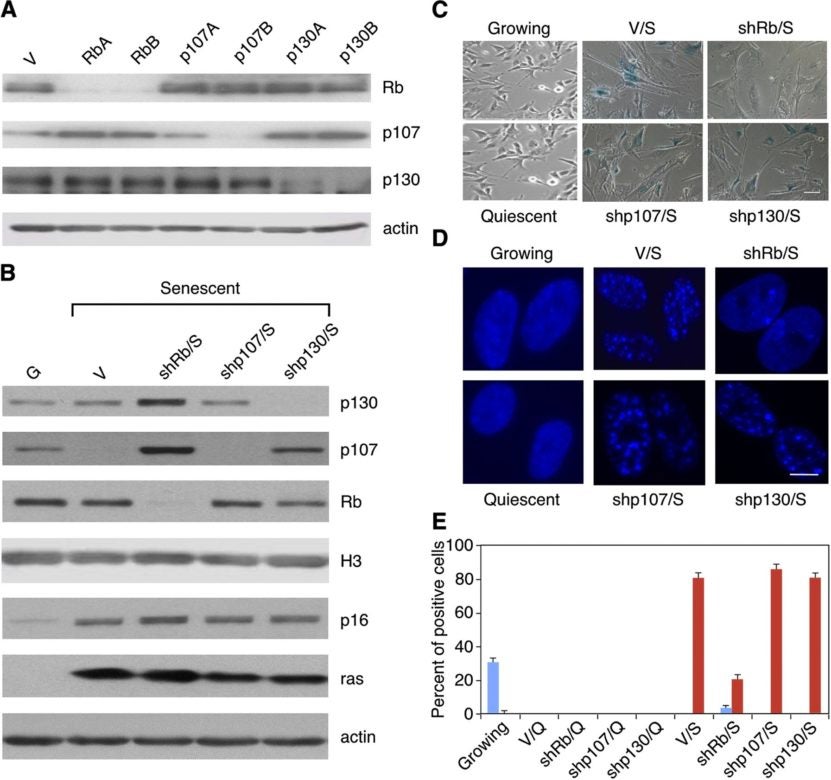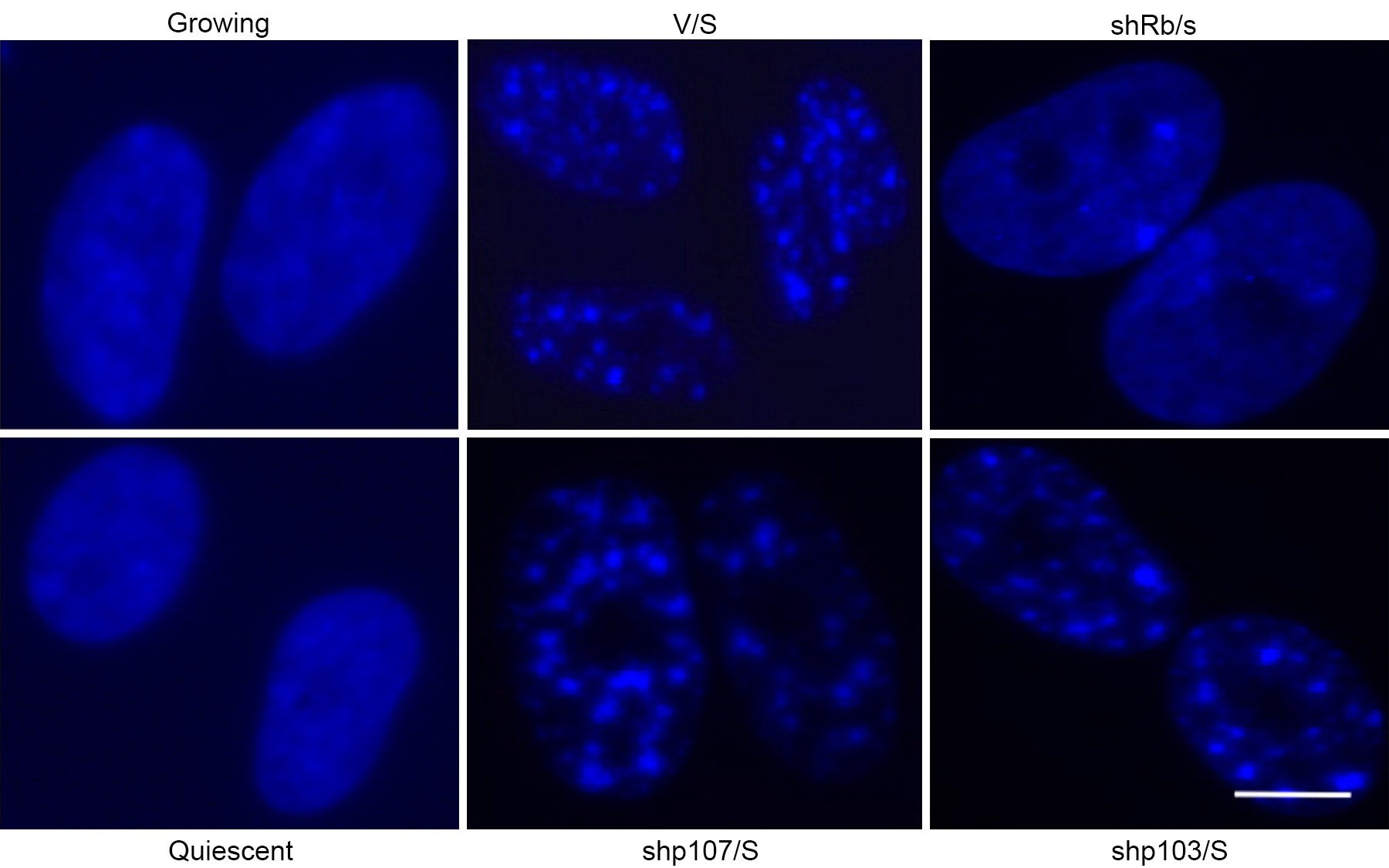The tumor suppressor Retinoblastoma (RB) represses DNA replication genes during senescence
Cold Spring Harbor, NY — A frequently mutated gene in human cancers is the retinoblastoma (RB) gene, which controls a potent tumor suppression pathway. Mutations in the gene disable the vast and intricate RB pathway in virtually all tumor cells, leading to disturbances in a host of cellular functions and ultimately provoking cancer. But which of these functions is crucial for the gene’s tumor-suppressing activity has been uncertain.

(A) Immunoblots of growing IMR90 cells infected with the indicated shRNAs probed for RB, p107, or p130. Actin was used as loading control.
(B) Immunoblots of ras-senescent IMR90 cells. Chromatin-bound fractions were used for the RB, p107, and p130 blots and Histone H3 was used as loading control. Whole cell lysates were used for the p16 and ras blots and actin was used as loading control.
(C) SA-b-galactosidase staining. The scale bar represents 100 mM.
(D) DAPI staining to visualize SAHF. Scale bar represents 10 mM.
(E) Quantification of SAHF (red bars), BrdU incorporation (blue bars). Values represent the mean and standard error (SE) of at least three independent experiments. (V) is empty vector, (S) is senescent, (G) is growing, and (Q) is quiescent.
RB’s exact mode of activity has been difficult to tease out because it is part of a multigene family that includes two other members that are structurally very similar to RB and have highly overlapping functions. And yet, RB’s activities appear to be a more vital part of cells’ anti-cancer arsenal as compared to other RB family members, which are very rarely mutated in human cancers.
One of the cellular processes controlled by the RB family is cellular senescence, which is now known to act as a barrier against cancer. “So we hypothesized that the RB protein must exclusively target and control certain senescence-related proteins, which in turn must mediate its potent tumor-suppressive function,” explains Lowe.
To investigate the relative effects of each RB family member on senescence, Lowe’s team generated multiple short hairpin RNA (shRNA) molecules that specifically shut off individual RB family genes when introduced into human cells with intact RB networks. The team then switched on an oncogene in these cells, which normally triggers cells to cease dividing and enter the senescence mode as part of a failsafe mechanism that prevents cancer.
The team found that when RB alone was switched off, the cells could not efficiently undergo this process of oncogene-induced senescence. When these cells lost RB activity, they could not shut off DNA replication, began to replicate out of control and developed genomic instability. “These aberrant processes, when exacerbated by breakdowns in other control mechanisms, lead to the development of malignant tumors,” says Agustin Chicas, Ph.D., a postdoctoral fellow working with Dr. Lowe and the lead investigator in the study.
Further investigations showed that a key target of RB is a gene called cyclin E1, which has been found to be overactive in many human tumors and is often associated with poor prognosis in patients. Its normal function is to spur DNA replication during the cell cycle and hence it is tightly suppressed by RB in senescent cells. The team showed that the loss of RB frees cyclin E1, thus allowing cells to escape senescence.
“Our team’s findings suggest that the selective targeting of DNA replication genes during senescence represents one key activity of RB in tumor suppression,” says Lowe.
Written by: Hema Bashyam, Science Writer | publicaffairs@cshl.edu | 516-367-8455
Citation
“Dissecting the Unique Role of the Retinoblastoma Tumor Suppressor during Cellular Senescence,” appears online on April 13th in Cancer Cell. The full citation is: Agustin Chicas, Xiaowo Wang, Chaolin Zhang, Mila McCurrach, Zhen Zhao, Ozlem Mert, Ross A. Dickins, Masashi Narita, Michael Zhang, Scott W. Lowe. The paper is available at http://www.cell.com/cancer-cell/abstract/S1535-6108(10)00072-3
